Travel / Mérida
Mérida, Mexico
The Yucatán capital is having a moment in the sun as a new wave of artists, architects and restaurateurs put down roots.
“Mérida is a mix of everything,” says Carlos Martínez, a G&T balanced precariously in one hand. “It’s New Orleans, Paris, Maya, Spain, the Caribbean, Mexico.” The head of a prominent branding agency in the north of town, he’s standing on the patio of a speakeasy that recently opened in the Yucatán capital’s charming, crumbling centre. Despite the so-called “cold front” that has blown in, people are braving night-time temperatures of 20C – about as cool as Mexico’s humid southeast gets – to sip fragrant, house-made gin and chase sotol, a northern Mexican spirit.
The crowd is an exercise in internationalism. Standing near Martínez is his colleague Rosana Toro and her husband Santiago Lazo – possibly the happiest couple in Mérida – who are buzzing about their new home, despite having been forced to leave their native Venezuela due to the crisis. Then there is Miru Kim, a former New Yorker originally from South Korea who has acquired a derelict colonial house nearby and is making it her mission to recapture Andy Warhol’s Factory a la mexicana. The evening had started in a similarly auspicious fashion: dinner of octopus and Baja Californian clams at Oliva, an Italian restaurant. At the table were American John Powell – one of Mérida’s most established expats and one half of Urbano home rentals company – and Sylvia Chivaratanond, an LA-based art consultant who has previously worked for Moma and Centre Pompidou, in town for a mere 36 hours this time.
While it’s almost a rite of passage to wake up with a niggling headache after an evening spent in the centre, to dismiss Mérida as some gringo party juggernaut would be inaccurate. “It’s small yet it feels international – but it’s very discreet,” says Chivaratanond, who is in the process of restoring a former schoolhouse to turn it into an artist residency. Powell also has a favourable opinion of Mérida. “I bet there’s no city in the US with a million people this safe,” he says. Indeed, while Tulum – a Caribbean beach resort three hours’ east by car – battles negative headlines of crime, rampant development, drugs and a seaweed infestation, inland Mérida feels like the polar opposite.
Found on the western tip of the Gulf of Mexico, the city has always absorbed influences – not least from Cuba, a short hop away, with which Yucatán shares a penchant for the guayabera shirt. In the late 19th and early 20th centuries the area enjoyed a period of trading wealth and that gilded past is firmly on display on Paseo Montejo. Sure, you have to look beyond the Walmart supermarket on Mérida’s signature thoroughfare – as well as a McDonald’s by a roundabout featuring a monument to the motherland – but your eye will soon land on the jaw-dropping French-style fin de siècle mansions that remain, in particular the stone Casas Gemelas (twin houses) that suggest the Right Bank has been dumped in the tropics.
As the temperature starts to climb, a chipper Martínez arrives in his 1980s red Jeep, seemingly unaffected by the previous evening’s antics that ended with queso relleno (stuffed cheese) and beer at 01.00 outside the Santiago food market. We head to Quinta Montes Molina, a mansion-turned-museum that shows off the opulence of the past. Martínez makes a quick call and soon Agustín Illescas – the great-grandson of the man who bought the house from the original Cuban owner more than a century ago – appears at the door.
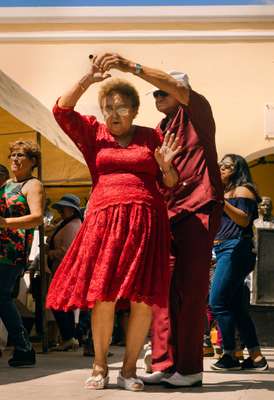

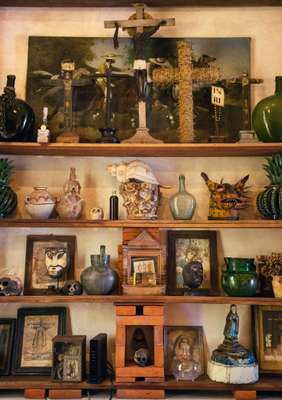

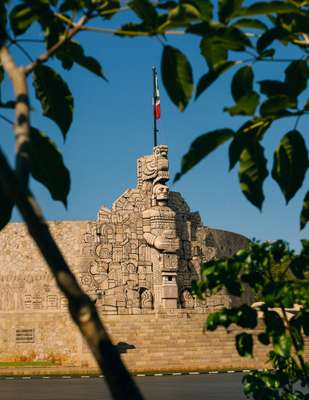
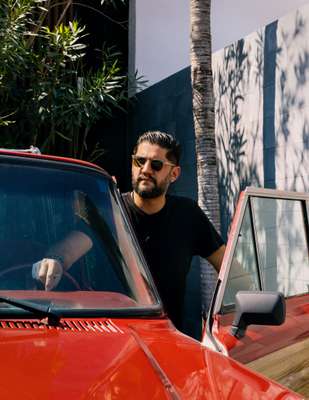

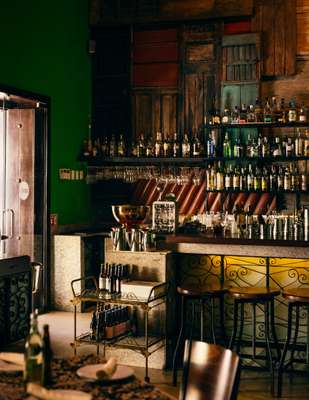
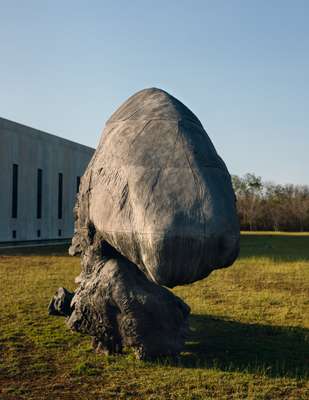
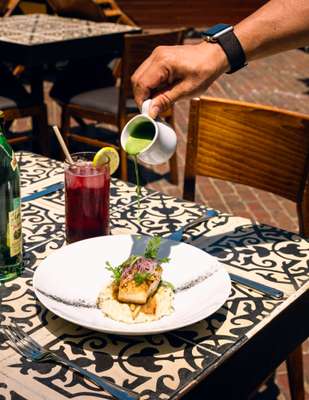
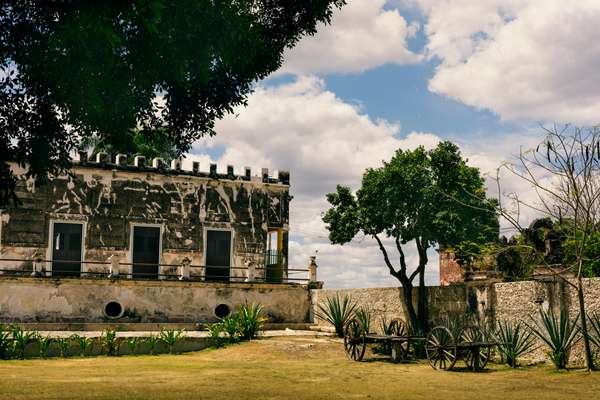

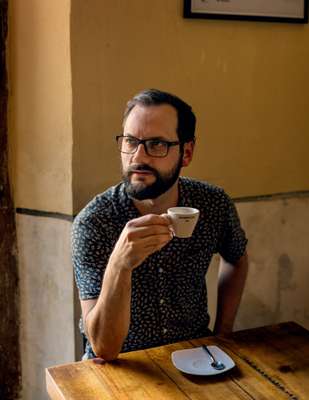
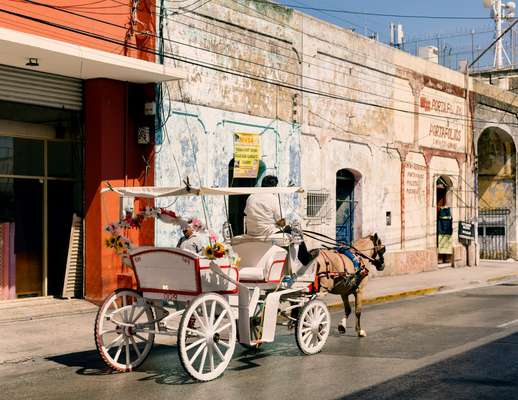

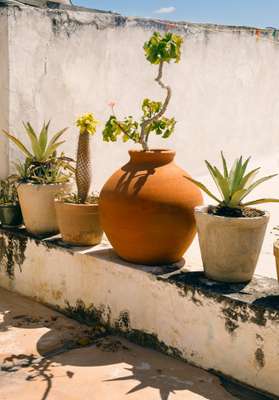
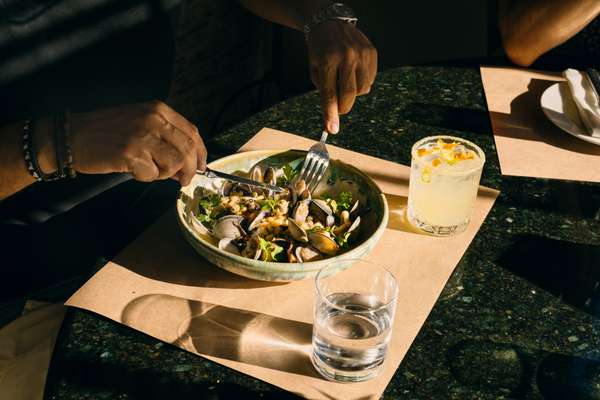
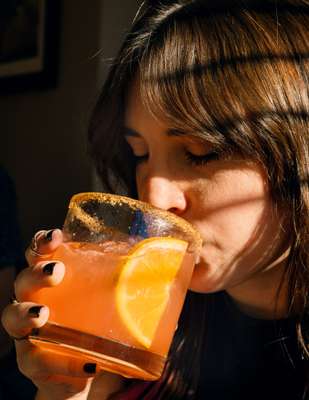
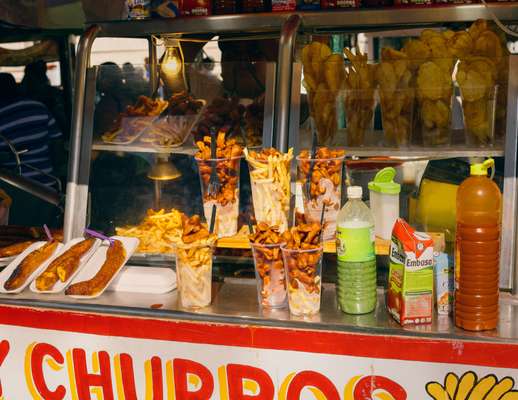
“These people were to Yucatán what Rockefeller and Carnegie were to the US,” he says, looking at pictures of his family on the walls and pointing to the Italian marble floors and Tiffany window in the living room. The source of their wealth was an agave plant called henequen (also known as sisal, a misnomer that takes its name from the port that the plant set out from). Tough as nails, it was for a while the world’s strongest rope-producing material. Native to Yucatán, it brought vast riches to landowners once the industrial revolution mechanised its production. But the glory days were short-lived: soon Brazil had worked out how to produce it quicker and more efficiently. Tanzania got in on the act too, before advances in synthetics dealt a killer blow.
The once humming haciendas that dot the state – some gently falling apart, others turned into chocolate-box luxury hotels – are witnesses to that time. South of the town, Hacienda Yaxcopoil – its stone faded and stained – is a must for a wander around, despite some poor restoration in places. The standout feature is the stunning double-arched entrance (a signifier that the estate once had 2,000 heads of cattle), clearly influenced by Italy’s Andrea Palladio.
Mérida’s heat means you should take things at a leisurely pace. If you’re in need of an escapade you could always visit the stunning Mayan pyramids of Uxmal, enjoy the cenotes (natural swimming areas created by perforations in the bedrock) or take a short drive to the coast. But Mérida is a place where it’s pleasurable to just be – and you’ll dedicate ample time pondering exactly why. Maybe it has something to do with the elastic way hours pass in a city that seems stuck in a time warp. Or maybe it has something to do with Yucatán’s strong identity, forged by twice declaring independence from Mexico, and a distinctive culture and gastronomy.
Whatever the case, in the past decade Yucatán’s capital has begun to return to a different type of boom times. There has been an influx of Mexicans from other states, attracted by the safety, and foreigners lured by a sense of adventure and a property bargain. That has meant a creative crowd, from US painter James Brown and Danish chef René Redzepi, who regularly takes a hacienda here, to Mexican contemporary artists Pedro Reyes and Javier Marín. The latter has built a vast, futuristic residence for visiting artists outside town known as Plantel Matilde. The hospitality sector has been catching up too, with Mexico City’s Grupo Habita due to open a hotel next year.
With a chunk of people tinkering with run-down colonial houses it’s perhaps little surprise that Mérida is packed with architects. While firms such as Taco and AS Arquitectura are doing interesting projects around town, no studio has managed to straddle the old and the new quite like husband and wife Salvador Reyes Ríos and Josefina Larraín. Originally from Chile, Larraín arrived in the 1990s as a backpacker and ended up falling in love with, and subsequently buying, a hacienda. Since then the couple have worked on a string of projects, including a modernist guest house called Casa Sisal within the grounds of Hacienda Sac Chich. There has also been subtle work at Hacienda San Antonio Hool, including neutral contemporary wall additions, as well as the restoration of the Rosas y Xocolate hotel on Paseo Montejo.
Perhaps the boldest work to date is in the heart of the town: Palacio de la Música, a collaboration with three other studios, again points to a symbiosis between past and present. Opened last year, it’s a curvy music hall and museum with jagged steel spikes pointing skywards; its interaction with its historic surroundings is intriguing. “The building frames the dome of the monument,” says Ríos, referencing the adjacent 17th-century Templo de la Tercera Orden church, as we walk through the public open space created by the raised building. “At the same time it creates a patio.”
While Mérida has traditionally flirted with US-style living in its north – all high-rise apartment buildings, car dealerships and shopping malls – it’s the city centre where you’ll find people trying something different. Since moving back after two years in Madrid, Martínez and his Bienal agency have been behind the branding of some of the city’s best downtown drinking and dining spots. It’s a scene that is becoming increasingly confident and international, from the Cuban-inspired Casa Chica to Volta Café, via new restaurant Te Extraño Extraño (inside the excellent Lagalá shopping gallery). The gallery scene, meanwhile, has received a boost from the arrival of Mexico City’s José García. His open-air space is a direct response to the elements, which means he sometimes has to close when a storm rolls in. García says he was looking to do more than simply plant a flag: “I didn’t want to just come and open a White Cube. It had to have context.”
Near García’s gallery, a self-taught ceramic artist Uxi has combined studios with fellow artist Áurea Sian-ka’an, who mostly works with stone. Together they mine the peninsula’s rich Mayan heritage, collaborating with artisans to produce everything from cutlery made of dark, durable katalox wood to candelabras incorporating the dried shell of jícara (calabash), all as part of their Región brand. They also recently started working with Tulum’s Gitano restaurant that has opened an outpost in New York. “Here you can afford to have a house and a studio – and get between them easily,” says Uxi.
The cross-pollination doesn’t stop there. Cuban-American artist Jorge Pardo, who spends about half of his year here, is set to open a high-end restaurant in the Santa Ana neighbourhood with chef Roberto Solís, who has long run northern Mérida’s stellar Néctar establishment. Solís shows me round the new space called Huniik, due to open later in the year, with its designer chairs and colourful light fixtures that wouldn’t look out of place in LA or New York, all designed by Pardo. A tasting menu will offer food that has been cooked in the ground – a Yucatán speciality – and showcase Mexican gastronomy’s European and indigenous sides, something Solís calls “an ambitious project – in all senses”. Huniik is located near Apoala, a Oaxacan restaurant overseen by chef of the moment Sara Arnaud. Not to be outdone, she’s teaming up with architecture firm Reyes Ríos + Larraín to provide the food at a new café and cultural centre concept called Esquina Carmesí, opening later this year.
Perhaps all of these new endeavours get to the heart of what makes Mérida tick: the mix. You can eat high-end Italian food one moment and then be cramming a cochinita pibil taco – a signature slow-cooked pork dish – into your mouth the next. No establishment quite embodies the high-brow, low-brow dichotomy quite like La Negrita, the city’s oldest cantina – it dates back to 1917 – that co-owner Patricia Martín saved from being razed. A tiny human with a larger-than-life personality, she’s sitting at a round table shouting over the live Cuban music. She breaks for a moment to get up and kiss some politicians (she’s not sure if they’re from city hall or the state), while locals and tourists mingle on the dance floor. Her guayabera-wearing bar manager Jesús, who is from Argentina, is at her beck and call. “This is a fifth-rate cantina with first-rate people,” she jokes. Mérida wouldn’t have it any other way.
The guide
Stay: Urbano Rentals: The hotel scene still has some way to go, although Casa Lecanda is worth a look-in and Grupo Habita promises to raise the stakes. Rent one of the beautiful colonial houses that Urbano’s Josué Ramos has painstakingly restored; El Portico de la Candelaria, where Ramos lives when he’s not renting it is a stunner, with a giant tree providing shade in its central patio. Also look into Coqui Coqui’s single-room L’Epicerie.
urbanorentals.com/properties
Eat: La Lupita: You’ve got to go local while you’re in town and this place, which has been around for more than 45 years, is where to do it. Head here for meaty breakfast tacos if your stomach can handle it; go for the ridiculously good slow-cooked cochinita pibil and relleno negro, both featuring pork.
Drink: La Negrita: In Mérida you’re spoilt for choice when it comes to watering holes. La Negrita has decent prices, live music every day and is always packed (note that it shuts at 22.00). There is also La Fundación Mezcalaría and Casa Chica – both worth a visit. Failing that? The town has two speakeasies, Malahat and another unnamed one on Calle 53, on the corner with Calle 56.
+52 999 291 8601
Buy: Lagalá: Before opening this shopping gallery, co-founder Ana Carolina Levya used to organise El Mercadito, a regular pop-up showcasing Mexican design. Lagalá includes an art gallery, Te Extraño Extraño restaurant (the chilaquiles are highly recommended) and an upstairs boutique featuring jewellery, ceramics and clothing, including up-and-coming designer Sanchez-Kane. Levya sees herself at the vanguard of Mérida’s shift. “That’s why I change all the time,” she says, pointing to her dyed blonde hair.
lagala56.mx
See: Paseo Montejo: A walk along this street means you can ogle the mansions of Mérida’s gilded age, stop into Quinta Montes Molina and have a coffee at the old-school Cafeteria Impala that dates back to 1958.


